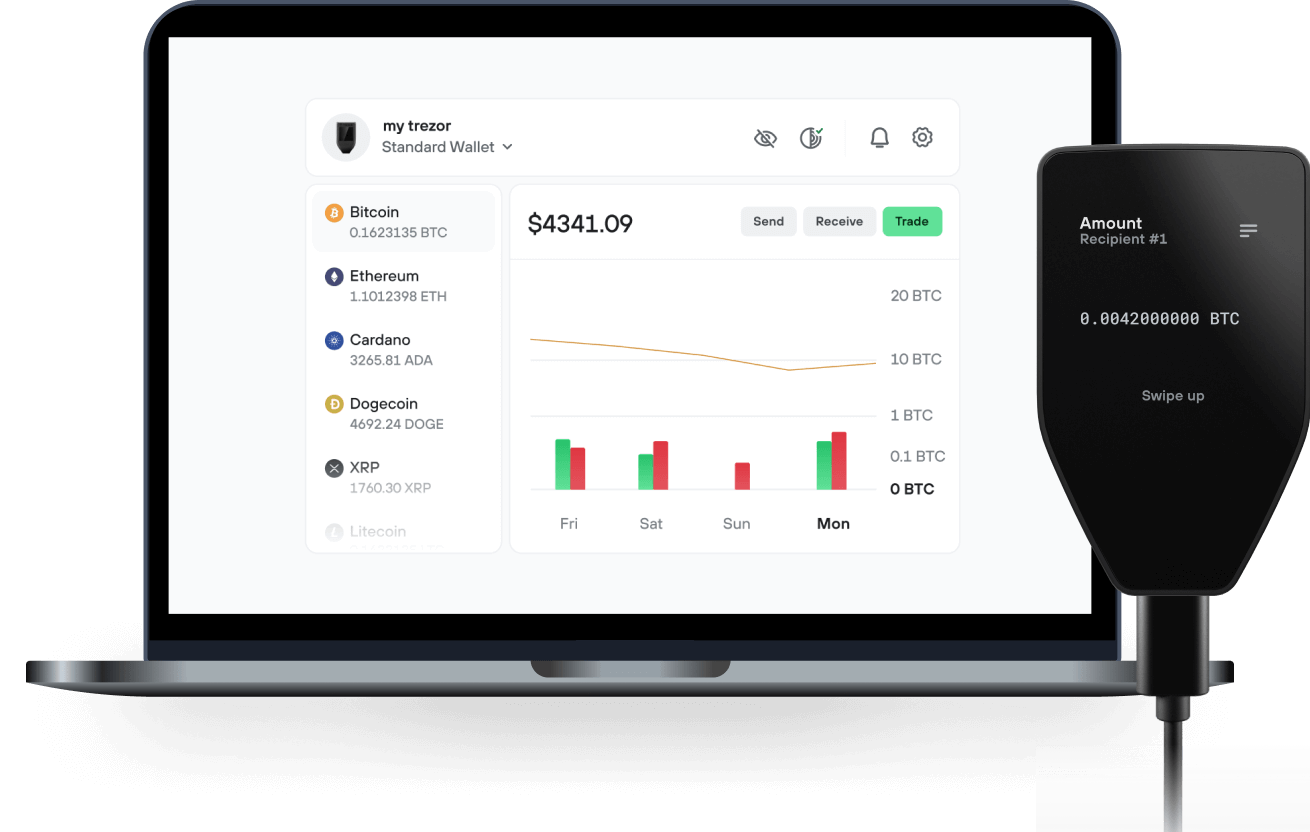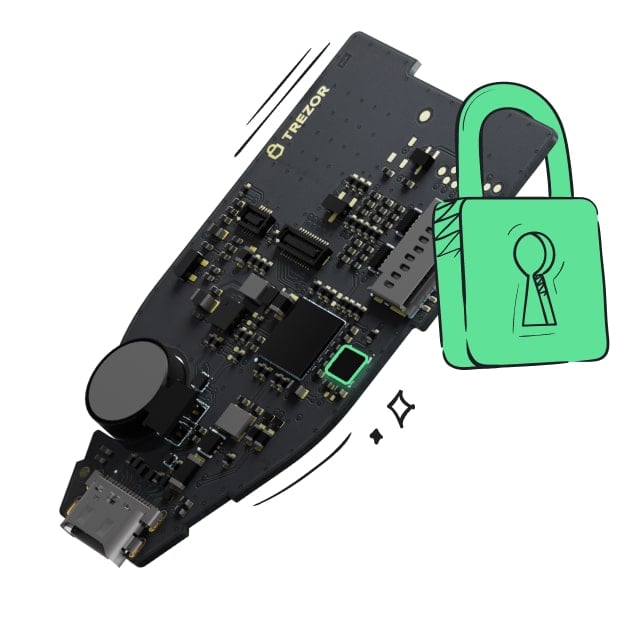Portefeuille sûr et sécurisé Chainlink
Prenez le contrôle de vos Chainlink actifs en toute confiance dans l’écosystème Trezor.
- Sécurisé par votre portefeuille matériel
- Utiliser avec des hot wallets compatibles
- Adopté par plus de 2 millions de clients

Achetez, vendez et gérez vos Chainlink avec l'application Trezor Suite

Envoyer et recevoir

Achetez, vendez et échangez
Portefeuilles matériels Trezor qui supportent Chainlink
Synchronisez votre Trezor avec des applications de portefeuille
Gérez vos Chainlink avec votre portefeuille matériel Trezor synchronisé avec plusieurs applications de portefeuilles.
Trezor Suite
MetaMask
Backpack
Rabby
NuFi
Chainlink Réseaux supportés
- Polygon POS
- Base
- Cronos
- Ethereum
- Fantom
- Harmony Shard 0
- Arbitrum One
- Avalanche
- Metis Andromeda
- Optimism
- Gnosis Chain
- Energi
- BNB Smart Chain
- Huobi ECO Chain Mainnet
- Kaia
- Blast
- Polygon zkEVM
- Astar
- Moonbeam
- Merlin Chain
- ZkSync
- Scroll
- Moonriver
- Fraxtal
- Wemix Network
- Linea
- Mantle
- Mode
- Milkomeda (Cardano)
- OpBNB
- X Layer
- Core
- Sei Network
- XDC Network
- Solana
- Kroma
- Zircuit
- Etherlink
- Berachain
- Ronin
- Cronos zkEVM
- World Chain
- Monad
- ApeChain
- Sonic
- Ink
- Abstract
- Soneium
- Unichain
- HyperEVM
- Corn
- Superseed
- Lens
- Plume Network
- Hemi
- Katana
- Bitlayer
- Botanix
- TAC
- HashKey Chain
- Plasma
Pourquoi un portefeuille matériel ?
Allez hors ligne avec Trezor
- Vous possédez 100% de vos crypto
- Votre portefeuille est 100% sécurisé hors ligne
- Vos données sont 100 % anonymes
- Vos cryptos ne dépendent d’aucune entreprise
Échanges en ligne
- Si un échange échoue, vous perdez vos crypto
- Les échanges sont des cibles pour les pirates
- Vos données personnelles peuvent être exposées
- Vous ne possédez pas réellement vos crypto
Comment utiliser LINK sur Trezor
Connectez votre Trezor
Installez l'application Trezor Suite

Transférez votre LINK

Profitez pleinement de votre LINK
Trezor garde vos LINK en sécurité
 Protégé par Élément Sécurisé
Protégé par Élément SécuriséLa meilleure défense contre les menaces en ligne et hors ligne
 Vos jetons, votre contrôle
Vos jetons, votre contrôleContrôle absolu de chaque transaction avec confirmation sur l'appareil
 La sécurité commence par le code ouvert
La sécurité commence par le code ouvertLe design de portefeuille transparent rend votre Trezor meilleur et plus sûr
 Sauvegarde de portefeuille claire et simple
Sauvegarde de portefeuille claire et simpleRécupérez l’accès à vos actifs digitaux avec un nouveau standard de sauvegarde
 Confiance depuis le premier jour
Confiance depuis le premier jourLes sceaux de sécurité sur l’emballage et l’appareil protègent l’intégrité de votre Trezor
Chainlink is the industry-standard decentralized oracle network that solves the "oracle problem" by connecting smart contracts with real-world data. Blockchains cannot access external information on their own, so Chainlink acts as a secure bridge, enabling smart contracts to react to real-world events using verified, tamper-proof data. It is widely considered one of the first decentralized oracle networks and is the market leader in bringing off-chain data on-chain.
The platform operates through a decentralized network of nodes that fetch, validate, and deliver data to smart contracts. When a contract requests information like a stock price, a committee of independent nodes retrieves and aggregates the data to reach consensus, then delivers a single trustworthy answer. Chainlink offers a suite of services including Data Feeds for asset prices, CCIP for cross-chain token transfers and messaging, Automation for triggering smart contract functions, and Proof of Reserve for verifying asset collateralization.
Chainlink has established itself as critical infrastructure for both DeFi and institutional adoption, with partnerships including Swift, Euroclear, Mastercard, UBS, ANZ, Fidelity International, and J.P. Morgan. Its institutional products include the Chainlink Runtime Environment for tokenized asset workflows, Confidential Compute for privacy-preserving computation, and the Automated Compliance Engine for embedding regulatory rules into smart contracts.
The LINK token is the native asset used to pay node operators for services, fund subscription accounts, and incentivize network security through staking. Node operators stake LINK as collateral, which can be slashed if they provide inaccurate data. Chainlink was co-founded in 2017 by Sergey Nazarov and Steve Ellis, who co-authored the white paper with Ari Juels, and raised $32 million in its September 2017 ICO.